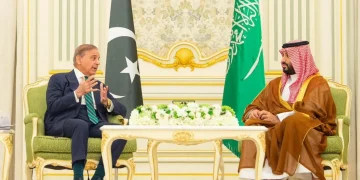Tourism scenario in the country is in for a push forward with introduction of the e-visa, or electronic visa system, recently. This is expected to make travel to India easier for foreigners. While India has not been able to aggressively promote tourism, fact is also that the sector is growing at the rate of nearly 8 per cent, generating over 6 per cent of the GDP and providing jobs to about 45 million people even in these times of global economic downturn. Still, there exists wide scope for a more active push, as is evident from the fact that global travel and tourism competitiveness estimates rank the country down at around 60.
India’s traditional strengths in this sector have been its rich heritage, familiarity with English language, its cultural diversity, scenic locales and the largely spread beaches. Yet, the ‘Incredible India’ campaign undertaken by the tourism department in the past many years has failed to give a spectacular boost to this sector. Issues that come in the way are India’s lack of cleanliness that is so manifest especially in its urban areas and water bodies, people’s inability to respect personal space of tourists, lack of smart infrastructure like clean public toilet facilities at regular intervals, pushy and aggressive sales pitch targeted at tourists by roadside vendors, disrespect for women in general and foreign tourists in particular, a general attitude to cheat and make a quick buck from unsuspecting travellers and lack of zest on the part of tourism department to publicise this country’s strengths and make people more aware of the change that is needed.
Traditional tastes are changing in the matter of tourism. Taj Mahal, what was India’s main showpiece for long years, is witnessing a steady fall in tourist arrivals. There is a 15 per cent fall in arrivals this year alone. This is where about 8 lakh foreigners used to land every year, forming 10 per cent of the total tourist flow to Agra. Tourism is transforming into new forms, like medical tourism, eco tourism, religious tourism and the like, where India has been making inroads, of late. The law and order problem in Kashmir has been a dampener, but centres like Goa have more than made up for that shortfall. This inflow to places like Goa might be from the domestic sector since recent years have seen domestic tourism gaining strength, thanks to the emergence of a burgeoning middle class with enough money to spare.
Problem is, India is slowly becoming too crowded and uncomfortable for many foreign tourists. Baring those who are mentally prepared for a rough time, most travellers are disappointed at not finding the ‘peace’ that they were looking for. Taking a cue from countries like Thailand and Malaysia would be in order, where tourists get their ‘space’ even in the midst of crowds. Plus, eco tourism, which is catching up fast, needs special government focus on protection of forests and animal resources. It is common knowledge where India stands on that front. All this needs to be looked into before we can expect great results from the e-visa system.
Citizens from over 40 countries can now land in India by availing e-visa by the click of a button. The system eliminates the hassles associated with obtaining visa, even tourist visa, in which case much of the formalities are generally taken care of by travel agencies or package tour operators. This, however, took time and money. The e-visa system ensures faster visa clearance without hassles. There already were 12 countries in the Asia region as also Finland and New Zealand that enjoyed the visa-on-arrival facility for travel to India.
Considering the strengths that India still has in tourism, governmental efforts are way below expectations in most states. Governments caught between providing support to the poor and meeting basic developmental needs have problem setting apart funds for tourism promotion – as is the case with Orissa too, for instance. The charms of this state are one too many, be it in religious, spiritual, heritage, cultural, eco or beach tourism. But the infrastructure to support tourism growth requires tremendous build-up and there is need for a huge attitudinal shift for locals. Even hotels and restaurants servicing the sector need to smarten up and realise that it is time to apply the ‘less is more’ policy when it comes to tourism. 100 hotels in one busy street is not the idea of ideal fun place for most tourists. The government also needs to put in strict norms for giving permission to new hotels and have a regular review of existing hotels and their emissions, regarding sewerage disposal and the like.
India’s hesitation in granting e-visa facility to several countries now, like Pakistan, Sri Lanka or the ones in the Middle East or West Asia, has to do with its concern over terror. This has to be handled in an entirely different manner. All the same, the time has arrived for a guarded opening up of our borders. The e-visa system is a calling of the times. It can be expected to give an administrative push towards grabbing a larger share of the tourist inflow, provided we are ready for it.
Palestine Prospect
I t was a significant moment in the history of the struggle of Palestinian people to get a state of...
Read moreDetails




































